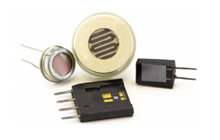
Powering the Internet of Things With Light
There is a lot of talk in the tech media about how the Internet of Things phenomenon, with billions of sensors being embedded, will collect data across virtually every aspect of our lives. What isn’t often talked about is how all these electronics — especially the mobile ones – will be powered.
 One company, Alta Devices, says it’s developed a mobile power technology that produces more power from indoor light than what most commercially available solar technologies are able to produce from the sun – up to 5 times more. This week, at the 2013 IDTechEx Energy Harvesting and Storage Exhibition, Alta was named “Best Technical Development of Energy Harvesting.”
One company, Alta Devices, says it’s developed a mobile power technology that produces more power from indoor light than what most commercially available solar technologies are able to produce from the sun – up to 5 times more. This week, at the 2013 IDTechEx Energy Harvesting and Storage Exhibition, Alta was named “Best Technical Development of Energy Harvesting.”
The company, which boasts world records in solar cell efficiency, says that it’s able to achieve its light to energy conversion feats by bucking the use of silicon, and instead using gallium arsenide, which it says has produced the most efficient solar cell to date.
A primer on its technology can be viewed here:
“We are on the verge of a massive revolution in data gathering and device connectivity,” said Chris Norris, president and CEO of Alta Devices. “Big data starts with small sensors, and many of these devices will need to be self-powered. Our technology has a small, lightweight, and flexible form factor, and its substantial power output under a wide variety of lighting conditions opens up new use cases for solar.”
While the technology sounds very promising, don’t expect to run to the local tech shop to pick up a solar powered sensor device any time soon. “We’re still pretty early in the development of these things right now,” Rich Kapusta, VP of Marketing with Alta told Datanami. “We have over 200 engagements with customers of all types across different customer segments… We’re still pretty far off from anything actually showing up in the market place – probably still a year away from something like that.”
“They’ve used some other solar materials, and they’re generally unhappy with the amount of power they get from these other solar materials, and then they take our samples, run some tests, and are generally blown away by the performance, and it opens up a lot of possibilities,” said Kapusta. He says, however, that these businesses are still trying to figure out how to leverage IoT capabilities. “A lot of them are very much in the R&D phase and still trying to figure out what they can do with it,” he says.
While he didn’t reveal pricing on the units, the discussion did indicate that pricing may be keeping customers in a holding pattern for a period. “It’s totally temporal,” he said. “Today’s price is going to be different from the 6 months from now price which is going to be totally different from the volume production price that they might get in a year, or even two years from now.”
Kapusta says that Alta intends to be competitive with other solar technologies available right now. “We’re not there yet, so if you really wanted to buy a bunch of material from us today, our costs are still pretty high. We’re running a pilot line in Sunnyvale, and we need to scale our manufacturing capability in order to get our costs down, but our plans are to do that.” Kapusta added that within the next two years Alta expects to be “well into the single digit dollars per watt.”
The Internet of Things has been a concept that has been rising in popularity over the last couple years, and is starting to heat up as vendors like Splunk roll out analytics packages that help businesses operationalize the sensor data throughout their organizations. In a forum last month, Gartner Senior Vice President and Global Head of Research, Peter Sondergaard, explained that the level of connectedness that is emerging will extend into the tens of billions of devices over the next decade.
“In 2009 there were 0.9 billion sensors and 1.6 billion personal devices,” said Sondergaard. “[That’s] roughly 2.5 billion things that were connected. By 2020, that will grow to become 30 billion things. Compute power will be cheap and covert – we won’t know it’s there. It will be in our jewelry, our clothing. We’ll put more computers into our laundry in a week than we’ve used in our lifetime so far.”
In the meantime, we’ll look forward to seeing what types of big data applications come about through the use of these light cell technologies.
Related items:
Gartner: Internet of Things Plus Big Data Transforming the World
The Big Data Market By the Numbers
Watson as a Service Becomes a Reality






























